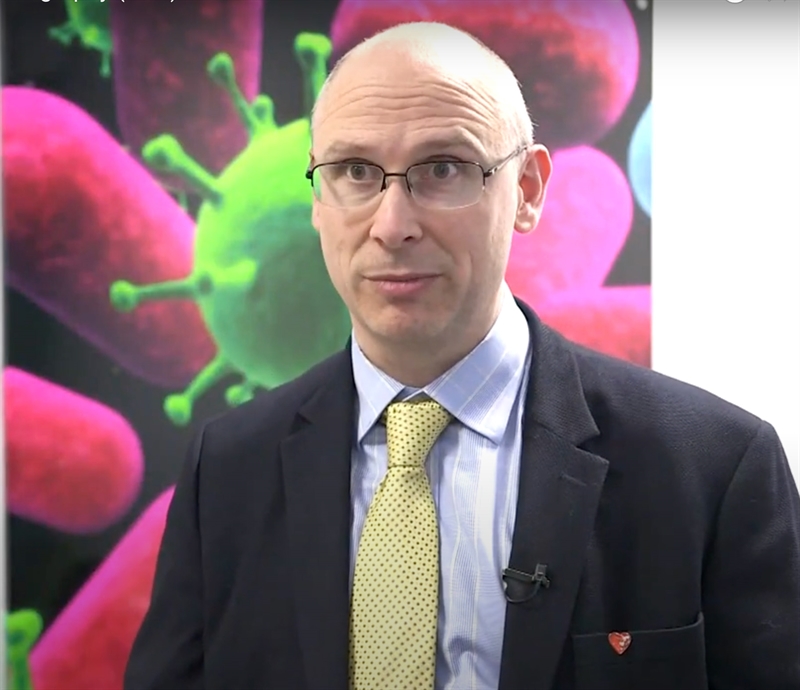A textbook for interventional cardiologists now includes a chapter on SCAD. This is great news for the SCAD community as it provides up-to-date information about SCAD, its diagnosis, management and aftercare to interventional cardiologists.
The new chapter in the PCR-EAPCI Textbook Percutaneous Interventional Cardiovascular Medicine, has been written by cardiologists and SCAD experts Dr David Adlam, who is leading the SCAD research in Leicester, Fernando Alfonso from Spain, Angela Maas from The Netherlands, Alexandre Persu and Christiaan Vrints from Belgium.
“It’s the first chapter dedicated to SCAD of any textbook of this sort,” said Dr Adlam, who added that the textbook will be continually updated with new information as it emerges.
The chapter defines SCAD and discusses two theories for how SCAD occurs, the ‘inside out’ and ‘outside in’ hypotheses. ‘Inside out’ suggests there is a ‘tear’ in the artery wall that allows blood to enter a false lumen that develops between the artery walls, disrupting blood flow. ‘Outside in’ suggests that the initial event is a bleed within the artery wall, where an intramural haematoma (bruise) builds up and slows or stops blood flow through the artery.
Progress in the genetics area is discussed, including common and rare genetic variants that are associated with SCAD. Click here for more on recent research.
Incidence of SCAD is, the authors say, hard to estimate due to under- and mis-diagnosis, but estimates range from 0.8-4%.
Around 90% of cases are in women and SCAD accounts for 23-36% of Acute Coronary Syndrome (ACS) in women under 50-60 years of age, with the average age being 50. Only around 5-10% of SCADs happen during or after pregnancy (P-SCAD).
Issues with diagnosis are covered, including the increased risk of further dissections being caused by angiography. The authors also list some conditions that can mimic SCAD on invasive angiography so, for accurate diagnosis in these cases, the authors suggest other options including intracoronary (OCT) imaging and CT coronary angiography.
Other areas covered in the chapter include conservative management and healing, risks and outcomes of stenting.
Contraception, HRT and ongoing chest pain
In a section about contraception and HRT, the authors say if unplanned pregnancy and menopause symptoms can be managed without hormone therapy, this is the easiest option, but if not, they suggest preferred contraception and HRT methods. They also offer various management approaches for SCAD patients who suffer from migraine, which they say happens with increased frequency in SCAD patients.
Many SCAD patients have ongoing chest pain and the authors suggest this happens more frequently in women, those who have migraine and those who experienced previous psychological or chronic pain issues. In most patients this improves over time, but this can take up to two years.
Recurrent SCAD
Around 10% of patients have a recurrence within five years of the first event. Recurrences usually happen in a different location to the first SCAD and, in observational studies, the authors say increased coronary tortuosity, FMD (Fibromuscular Dysplasia), migraine, uncontrolled hypertension and non-use of beta blockers have been associated with increased risk of recurrence.
The authors also say current data suggest there is a risk of recurrent SCAD with unplanned pregnancy following an initial SCAD.
However, there is no evidence that exercise after SCAD increases the risk of recurrence and cardiac rehab is safe and beneficial, both physically and mentally, but isometric and extreme exercises are not recommended.
Mental health
Due to the younger patient population, SCAD patients are at high risk of post-traumatic and other mental health problems and the authors advise early referral to counselling or other therapies.
Dr Adlam says in the chapter: “Once considered ‘rare’ and largely a disease of pregnancy, the advent of high-sensitivity cardiac biomarkers, early angiography and intracoronary imaging has demonstrated SCAD is a very important cause of ACS in woman and although most patients are not pregnant or post-partum, SCAD remains a key cause of ACS in this context.”
Click here to see Dr Adlam discuss the chapter with Trustee Rebecca Breslin (at 13 mins).
And he talks with Rodney De Palma, one of the editors of the textbook in this video.
The chapter is here (behind a paywall).
The PCR-EAPCI Textbook Percutaneous Interventional Cardiovascular Medicine is the main European textbook for cardiologists and trainees across Europe and the world who work in the cath lab. It is published by the section of the European Society of Cardiologists that deals with intervention.

